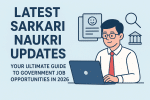Top 10 Tips for Enhancing Public Speaking Skills
Did you know 75% of people fear public speaking? It’s a common fear but a key skill in today’s world. This guide will share the top 10 tips to boost your public speaking. Whether you’re experienced or new, these methods will help you engage your audience and feel more confident.
Key Takeaways
- Overcome speech anxiety and build confidence through practice and preparation
- Develop a commanding stage presence using effective body language and gestures
- Captivate your audience with engaging storytelling and the use of visual aids
- Enhance your vocal variety and projection to deliver a dynamic speech
- Establish a strong connection with your audience through effective audience engagement
Mastering the Art of Public Speaking
Effective public speaking is a skill that can be honed and perfected with practice. This section delves into the crucial steps of mastering the art of public speaking. It starts with strategies to overcome fear and anxiety and building the confidence and poise necessary to command the stage.
Overcoming Fear and Anxiety
Conquering the fear and anxiety that often accompany public speaking is the first step towards becoming a confident and captivating speaker. Techniques such as deep breathing exercises, visualizing a successful presentation, and practicing extensively can help alleviate pre-performance jitters. Additionally, focusing on the message you want to convey rather than your own self-consciousness can shift your mindset and put you at ease.
Building Confidence and Poetry
Developing a strong stage presence and projecting an air of confidence are essential for commanding the attention and respect of your audience. This can be achieved through regular public speaking practice, honing your body language, and cultivating a positive and confident attitude. By embracing your expertise and passion for the topic, you can overcome any lingering insecurities and deliver a polished, professional performance.
Remember, mastering the art of public speaking is a journey, not a destination. With dedication and a commitment to continuous improvement, you can develop the skills and mindset needed to become a confident and compelling speaker.
| Overcoming Fear and Anxiety | Building Confidence and Poetry |
|---|---|
|
|
“The only way to do great work is to love what you do. If you haven’t found it yet, keep looking. Don’t settle.” – Steve Jobs
Top 10 Tips for Enhancing Public Speaking Skills
Mastering public speaking can boost your life in many ways. It’s key for presentations, speeches, and meetings. Follow these top 10 tips to improve your speaking skills and engage your audience.
- Conquer Your Fears: Face your public speaking anxiety head-on. Use relaxation methods and imagine success to boost confidence.
- Engage Your Audience: Make eye contact and use body language to connect. Tailor your message to resonate with your listeners.
- Organize Your Content: Create a clear speech structure. Start strong, support your points well, and end with a memorable note.
- Vary Your Vocal Delivery: Change your tone, pace, and volume to keep your audience interested. Highlight important points.
- Leverage Visual Aids: Use visuals that support your message. They should enhance understanding but not overshadow you.
- Embrace Storytelling: Share stories, personal experiences, and examples. They make your message more impactful.
- Practice, Practice, Practice: Rehearse your speech often. This will help you refine your delivery and become more familiar with your content.
- Anticipate Questions: Prepare for questions or objections. Have thoughtful answers ready to address them.
- Manage Your Nerves: Use deep breathing, positive self-talk, and visualization to stay calm and composed.
- Seek Feedback: Ask for feedback from trusted sources. Use it to find areas for improvement.
By following these tips, you’ll become a more confident and effective public speaker. You’ll be able to captivate any audience.
“The art of public speaking is the art of being oneself.” – Ralph Waldo Emerson
Content Preparation and Organization
Making a great public speech needs careful planning and organization. The way you structure your speech is key to getting your message across. Every step in preparing your content is vital for a speech that hits the mark.
Structuring Your Speech
A well-organized speech can hold your audience’s attention and clearly share your main points. Here are some tips to help you structure your speech:
- Begin with a strong introduction that grabs the audience’s attention and sets the tone.
- Make sure your ideas flow logically, using transitions to guide your audience through your main points.
- Break your content into clear sections, like introduction, body, and conclusion, for a smooth structure.
- End your speech with a memorable takeaway or call to action that sticks with your audience.
Researching and Fact-Checking
Having accurate and well-researched content is key to credibility and trust with your audience. Spend time digging deep into your topic and double-checking your facts. Here are some tips for research and fact-checking:
- Use credible and current sources, like academic journals, industry reports, and expert interviews.
- Check your facts and data from different reliable sources to ensure they match up.
- Think about questions or objections your audience might have and be ready with solid answers.
- Properly cite your sources to show the credibility of your information.
By focusing on content preparation and organization, you can create a speech that informs and engages. It will captivate your audience and leave a lasting impression.
Vocal Variety and Projection
To grab your audience’s attention, you need more than just to share facts. You must master the art of using your voice well. This includes vocal variety and projection. Let’s explore how to improve your speech delivery.
Vocal variety means changing your pitch, pace, and volume. By doing this, you make your speech more lively and interesting. Try changing your voice to highlight important points or to show emotions. Switching up your voice keeps your audience engaged and focused on your message.
- Use vocal variety by changing your pitch, pace, and volume in your speech.
- Make sure your vocal projection is strong so everyone can hear you, no matter the size of the room.
- Practice deep breathing to help keep your voice clear and strong during your speech delivery.
“The voice is the most powerful tool a public speaker has. Use it wisely, and it can captivate your audience.”
Learning to use vocal variety and projection can make you a better public speaker. Your voice is a powerful tool. Let it be the key to your engaging and memorable presentations.
Body Language and Stage Presence
Effective public speaking is not just about what you say. It’s also about how you act on stage. Your body language and stage presence can greatly impact your audience. They help keep your audience engaged and interested in your presentation.
Effective Gestures and Movements
Use purposeful gestures and movements to highlight important points. This makes your speech more interesting to watch. Try to avoid fidgeting and instead use open, confident gestures that support your message.
Keep your posture straight and use your whole body to express yourself. This helps you convey your message more effectively.
Maintaining Eye Contact
Strong eye contact is key to connecting with your audience. Look around the room and make eye contact with different people. This makes everyone feel included and connected to your message.
| Body Language Tip | Description |
|---|---|
| Open Posture | Stand with your shoulders back, chin up, and avoid crossed arms or other closed-off positions. |
| Purposeful Gestures | Use your hands and arms to emphasize key points and add visual interest to your speech. |
| Varied Movements | Move around the stage to engage different parts of the audience, but avoid pacing or fidgeting. |
| Confident Eye Contact | Make direct eye contact with individuals in the audience to build connection and rapport. |
Mastering body language and stage presence can greatly improve your public speaking. Your physical presence is a powerful tool. It can make your message more impactful and leave a lasting impression on your audience.
Audience Engagement and Rapport
Public speaking is more than just a speech. It’s about connecting with your audience. This connection makes your message unforgettable.
Connecting with Your Audience
To engage your audience, try these tips:
- Know your audience: Learn about their interests and what they expect. This helps you speak directly to them.
- Speak their language. Use simple words that everyone can understand. Avoid complicated terms.
- Make eye contact: Looking at your audience shows you care. It makes them feel connected to you.
- Get them involved: Ask questions or invite them to share their stories. This makes them part of the conversation.
- Be yourself. Speak from the heart. Being real and passionate builds trust with your audience.
By focusing on audience engagement and audience rapport, you can really connect with your audience. Your message will hit home in a meaningful way.

| Strategies for Audience Engagement | Benefits |
|---|---|
| Understand your audience | Tailored message and delivery |
| Use relatable language | Improved comprehension and engagement |
| Establish eye contact | Sense of personal connection |
| Encourage interaction | Active participation and feedback |
| Demonstrate authenticity | Build trust and rapport |
“The key to successful public speaking is not just delivering a speech, but creating a genuine connection with your audience.”
Visual Aids and Multimedia
Using well-designed visual aids and multimedia can really boost your public speaking. The right visual tools can support your message without taking away from it. Slides, images, or videos can help you share your ideas clearly and keep your audience interested.
Choosing the Right Visual Aids
Choosing the right visual aids is key for your presentation. Here are some tips to make sure your visuals help your message, not hinder it:
- Keep slides simple and clear, using high-quality images and graphics that support your main points.
- Use videos wisely, making sure they are short, relevant, and add value to your talk.
- Try interactive elements like polls or quizzes to get your audience involved.
- Don’t rely too much on visual aids; they should enhance your speech, not replace it.
- Make sure your visual aids are easy to read, well-organized, and accessible to everyone.
By picking and using visual aids, multimedia, and other presentation tools carefully, you can make your public speaking more engaging. This will capture your audience’s attention and make your message stronger.
| Visual Aid Type | Advantages | Disadvantages |
|---|---|---|
| Slides |
|
|
| Images |
|
|
| Videos |
|
|
Remember, use visual aids, multimedia, and other presentation tools wisely. They should enhance your message and engage your audience without taking over the presentation.
“The right visual aids can amplify your message and captivate your audience, but the wrong ones can be a distraction. Choose wisely and use them judiciously.”
Storytelling and Anecdotes
In public speaking, storytelling is incredibly powerful. Using anecdotes and narratives can make your message stick. Personal stories help connect with your audience and leave a strong impression.
Captivating Your Audience
Using storytelling and anecdotes can change the game in public speaking. These elements grab your audience’s attention and create a shared experience. When done right, personal stories make your message relatable and emotional.
- Find Key Anecdotes: Think about your life and pick stories that match your speech’s main points. Look for anecdotes that are relatable, thought-provoking, and show your message.
- Build Engaging Stories: Start, middle, and end your stories clearly. Use detailed language and emotions to bring your stories to life for your audience.
- Blend Stories Smoothly: Mix your anecdotes and narratives into your speech naturally. Make sure they add to your message without being a distraction.
Mastering storytelling and audience engagement can boost your public speaking. It helps you captivate your audience and leave a lasting impact.
| Technique | Description | Benefits |
|---|---|---|
| Storytelling | Weaving personal anecdotes and engaging narratives into your speech | Establishes a deeper connection with the audience, makes your message more memorable, and enhances audience engagement |
| Audience Engagement | Actively involving and connecting with your audience through interactive elements | Fosters a collaborative and immersive experience, encourages audience participation, and increases the impact of your message |

“The art of public speaking is the art of being yourself.” – Ralph Waldo Emerson
Practice and Rehearsal
Regular public speaking practice and detailed speech rehearsal are key to a smooth and confident speech. Spending time to practice and perfect your speech can greatly improve your performance preparation.
Practicing your speech out loud, in front of a mirror or with friends, helps you spot areas for improvement. It lets you work on your pace and get used to your presentation’s flow. This way, you can fix any issues and make your message clear.
- Rehearse your speech many times, focusing on areas that need more work.
- Record yourself and watch the recordings to find what to improve.
- Practice your delivery, including your voice, body language, and stage presence.
- Get familiar with any visual aids or multimedia you’ll use, making sure they fit smoothly into your presentation.
By practicing and rehearsing your public speaking often, you build confidence and polish your delivery. Embrace the preparation process to achieve a successful public speaking experience.
“The more you sweat in practice, the less you bleed in battle.” – Richard Marcinko
Conclusion
This guide has given you key insights and strategies to improve your public speaking. By mastering public speaking, you’ll not only grab your audience’s attention. You’ll also boost your confidence as a skilled communicator.
Using the top 10 tips for enhancing public speaking skills and improving your public speaking techniques will help you. You’ll give powerful presentations, connect well with your audience, and make a strong impression. With practice, self-reflection, and a drive to get better, you can reach new heights in public speaking.
Remember, becoming a skilled public speaker is a journey that never ends. But with the right tools and a commitment to grow, you’ll see big changes in your skills. Take on the challenges, seize the opportunities, and use the power of public speaking to open doors to success in your life and career.
FAQ
What are the key elements of effective public speaking?
To speak well in public, you need to vary your voice and use your body. Engage your audience and use visual aids wisely. Also, tell stories to keep people interested.
How can I overcome stage fright and build confidence as a public speaker?
To beat stage fright, prepare well and practice a lot. Use deep breathing and imagine yourself doing great. Remember, the audience wants you to do well.
What are some tips for structuring and organizing my speech?
Start with a clear introduction and use a logical flow. End strong, reinforcing your main point. Do your homework and check your facts to speak accurately.
How can I improve my vocal delivery and projection?
Work on your voice by changing pitch, pace, and volume. Speak from your diaphragm and breathe well. Practice with energy and excitement.
What role does body language play in public speaking?
Body language shows confidence and connection. Use gestures, make eye contact, and avoid odd movements. This helps you command the stage and connect with your audience.
How can I better engage and connect with my audience?
Share personal stories and ask questions to involve your audience. Tailor your words and tone to fit your audience. This makes your message more relatable.
What are the best practices for using visual aids in my presentations?
Visual aids should be clear, support your message, and not distract. Use them to enhance your talk, not replace it. Make sure slides are easy to read and understand.
How can I effectively incorporate storytelling into my public speaking?
Storytelling is powerful in public speaking. Share personal stories and use vivid language. Create a story that touches your audience and makes your message stick.
What is the importance of practice and rehearsal for public speaking?
Practice and rehearsal are key to a great speech. Spend time perfecting your delivery and being ready for the stage. This builds confidence and polish.















